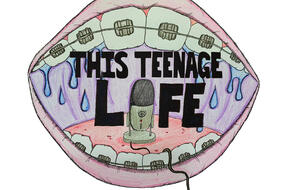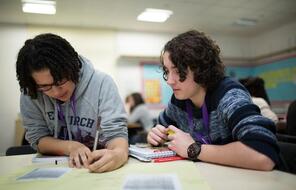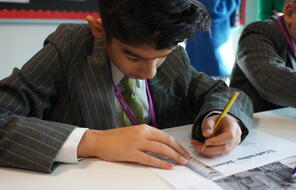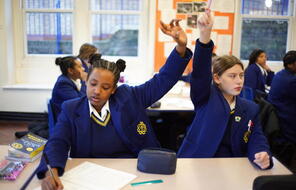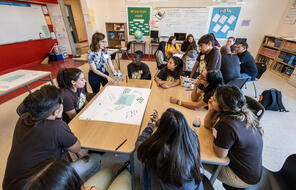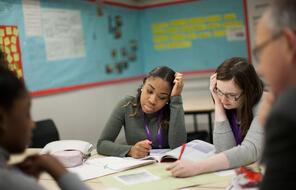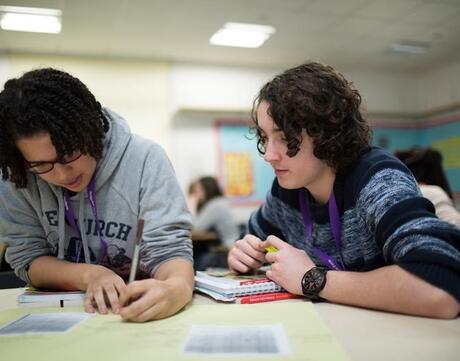
Exploring Antisemitic Tropes in Further Depth
Duration
One 50-min class periodLanguage
English — UKPublished
Overview
About This Lesson
This is the second lesson in a unit designed to help teachers have conversations with their students about contemporary antisemitism in a safe, sensitive and constructive way. Use these lessons to help your students reflect on antisemitism – how it manifests in contemporary society and its impact – and consider what needs to be done to challenge it.
In this lesson, students explore antisemitic tropes, their troubled history, their evolution and their present manifestation in further depth. The activities provide students with the opportunity to reflect on the destructive dangers of misinformation; to explore what led to the creation of antisemitic tropes, and how they have been used to exploit societal situations and target human emotions; and to consider the harm that the circulation of antisemitic tropes can cause.
Understanding the ways in which misinformation can be challenged and debunked is important when it comes to challenging antisemitism, particularly as many antisemitic tropes have gained wide currency on social media platforms. Teaching students about antisemitic tropes and their history helps them understand the roots of these malicious rumours and myths, as well as how they have been adapted to retain relevance in the present. These explorations can both mentally prime students to be critical consumers of antisemitic content they might encounter in the future and help counter any pernicious misinformation that may have already shaped their world view.
Teaching students about the tools deployed to help spread these tropes can also help them challenge antisemitism. Content spreading antisemitic tropes often seeks to provoke an emotional response and/or uses tactics such as dog-whistling (when people use code words to express racist and/or hateful feelings and content to avoid being called out on what they are saying). Helping students understand the means through which antisemitic content is spread is particularly important in the age of social media, when memes, images and ideas spread with incredible speed, as it encourages students to think critically about the information that they are consuming and sharing, and can prevent students from unsuspectingly sharing antisemitic content.
We recommend that you do preparatory work on discussing antisemitic tropes with students using the lesson Introducing Antisemitism and Antisemitic Tropes if you have not already done so.
Preparing to Teach
A Note to Teachers
Before teaching this lesson, please review the following information to help guide your preparation process.
Lesson Plans
Activities
Extension Activities
Materials and Downloads
Special Thanks
Sponsored By
Unlimited Access to Learning. More Added Every Month.
Facing History & Ourselves is designed for educators who want to help students explore identity, think critically, grow emotionally, act ethically, and participate in civic life. It’s hard work, so we’ve developed some go-to professional learning opportunities to help you along the way.
Exploring ELA Text Selection with Julia Torres
On-Demand
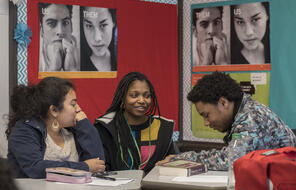
Working for Justice, Equity and Civic Agency in Our Schools: A Conversation with Clint Smith
On-Demand

Centering Student Voices to Build Community and Agency
On-Demand
